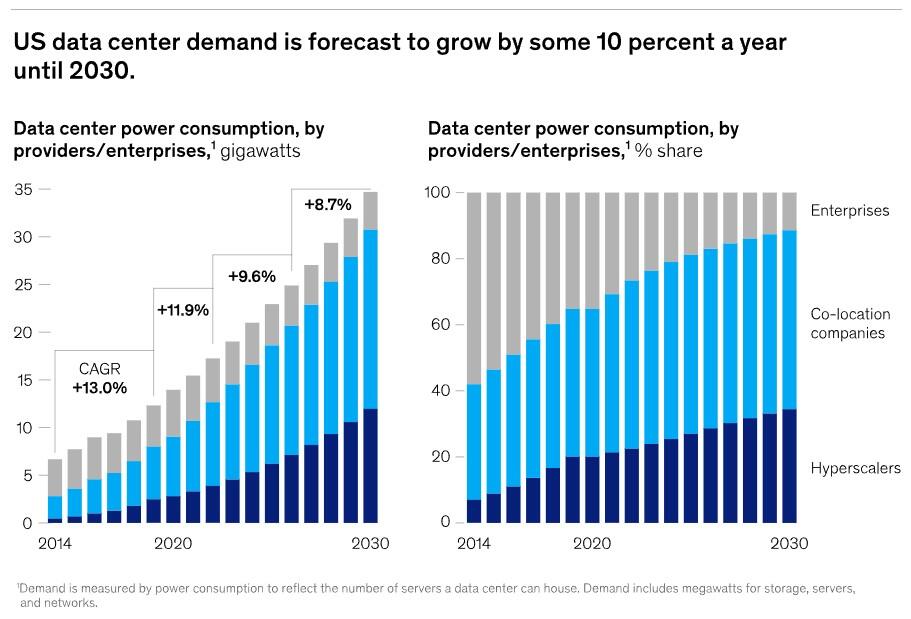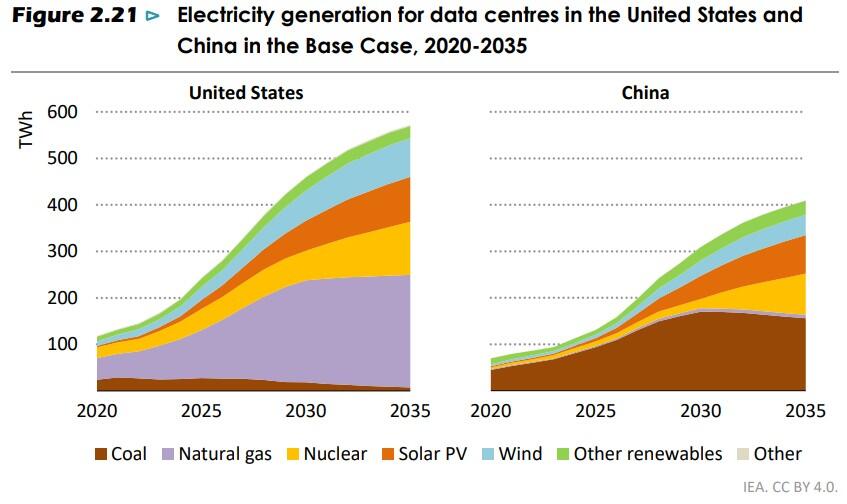Capital spends on gas and renewable energy sources will need to increase if the world is to meet demand for artificial intelligence processing power in the next five years, yet a marked increase in capital expenditure will be required.
According to a new report by the International Energy Agency, Energy and AI, global data centre electricity consumption could double by 2030 to over an eye-whopping 1,000 terrawatt hours (TWh) …IF we are to meet AI growth energy demands.
That's more than Japan's current total annual energy consumption - mind boggling.
In the United States alone, data centres could account for nearly half of electricity demand growth by 2030, while power use for data processing is expected to surpass all energy-intensive manufacturing combined, with AI-driven energy demand expected to quadruple in that period.
And across the world's advanced economies, data centres could drive over 20% of demand growth.
"Data centre demand will double globally in five years," said the IEA's Fatih Birol. “In the U.S., it could be half of growth — over half in Japan, one-fifth in Malaysia."
But how do we get there? Capital expenditures would need to be enormous.
In fact, McKinsey says capex on procurement and installation of mechanical and electrical systems for data centres is likely to exceed US$250 billion by 2030.
In order to make this happen, Birol says faster power generation, grid investment, improved data centre efficiency and stronger policy-tech-energy sector collaborations will all be required to meet to support the projected AI boom.
Electric Blues
The world's power systems are becoming increasingly complex, as electricity production shifts from large, centralised power plants to a multitude of small, distributed energy sources.
Data centres' overall share of total energy consumption met by electricity has been steadily rising and is forecast to accelerate, yet that requires large capital expenditures to be able to meet demand.

In parallel, as more data centres come online, the better our AI revolution will be able to collate and disseminate large pools of data in order to manage and improve the hurdles and complexity of our AI-integrated energy future.
The dependency paradox here, is that AI integration into the electricity sector could bring significant system-wide benefits and make power output more efficient. But we need that efficiency to create that efficiency…
A classic "chicken-and-egg" problem solver.
Energy pathway to 2030
Until we get to the inflection point that AI will be able to make our energy production expenditure cost-effective and self-improve and grow, renewables and natural gas will likely dominate new energy supplies due to their relatively low cost and availability to bring online.
Over the next five years, renewables are expected to meet nearly half of the additional global demand, followed by natural gas and coal, with nuclear starting to play an increasingly important role towards the end of the decade and beyond.
Coal, with a share of about 30%, is still the largest source of electricity, though this varies significantly by region - with the highest contribution found in China.
Renewables, primarily wind, solar PV and hydro currently supply about 27% of the electricity consumed by data centres globally, while natural gas is the third-largest source with 26%, followed by nuclear with 15%.
In the U.S. - the world's biggest growth market for data centres - natural gas is actually the primary source of electricity for the data centres with 40% and is projected to add on average 130TWh of annual generation until 2030.
“Some data centre operators are partnering with utilities and energy companies to expand gas-fired capacity, some of it directly co-located with data centres,” the IEA said in the report.

To make sure there's enough supply into the future, says the IEA, American utilities ”are revising their integrated resource plans, with the construction of additional gas-fired power plants planned across the country, some of them to support the increase in data centre loads".
Another inflection point will be the electricity network, as grid infrastructure will face much increased pressure from rapid AI expansion, and that's not even taking into account electric vehicle consumption which is also on the rise.
